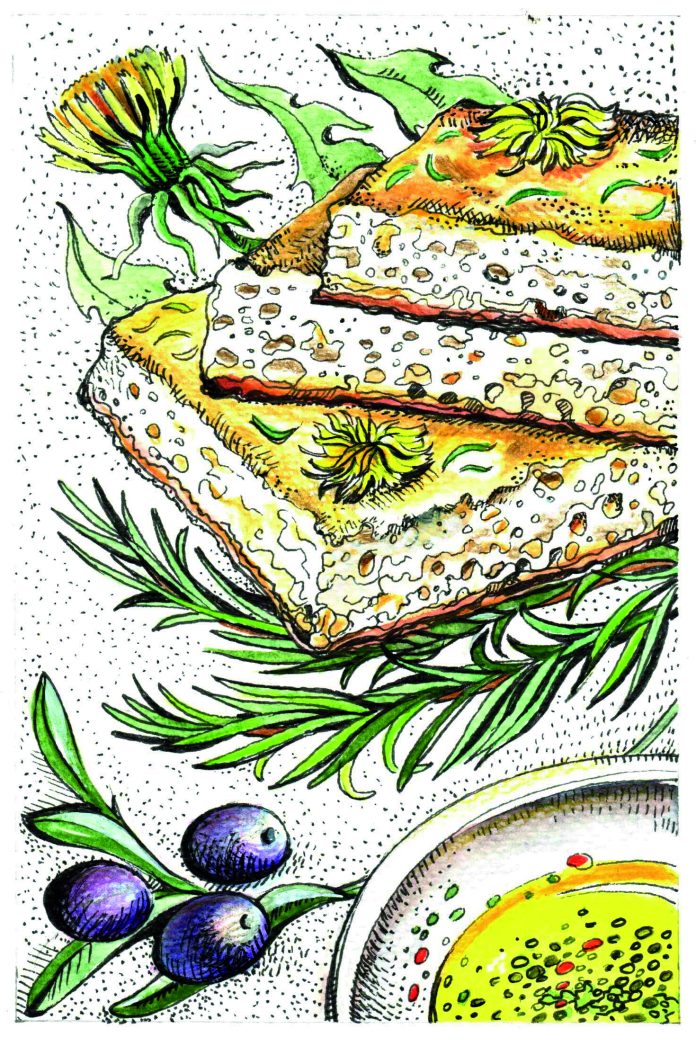by Alessandra Ressa
Most everybody I know has memories of blowing the billowing tufts of dandelion seedheads to make wishes and clear all the wispy seeds in one breath. The plants make for strong childhood memories, though many grown-up gardeners find them annoying. What’s the deal with these plants? Are they weeds or welcome visitors? Turns out, they’re something different to everyone.
To me, they are a welcome sign of Spring with their bright yellow blossoms covering the front lawn of my little house in Monte Prat, at the foot of the Friuli Alps. Dandelions are the epitome of cheerful resilience. Though many people inexplicably find them ugly and try to destroy them with harmful herbicides, they’re sunny little drops of happiness that offer a multitude of health benefits
According to The Garden Book, “The common dandelion (Taraxacum officinale) is among the most nutritious and useful of herbs, with a long history of culinary and medicinal use”. In fact, dandelion leaves and flowers are high in nutrients, including potassium, iron, and vitamins A, C, B1, and B2.
They are, most of all, a delicious and healthy ingredient to many of my Spring dishes.
I could make an endless list of recipes I have successfully tried with the flowers, leaves and sprouts of this delicious plant, but I would probably sound like Forrest Gump’s friend Bubba and his shrimp galore. Just so you know, you can make just about anything with dandelion flowers, from tea to syrup, to amazing desserts, lasagna, bread, ravioli filling, stir-fries, fritters, jelly, vinegar and pickles. You can also eat the flowers raw and add them to your salads.
Dandelion focaccia is one of our favorites and it is very easy to make. Here is how.
Ingredients:
25 grams fresh yeast
500 grams all purpose flour
1 boiled potato
4 tbs olive oil
salt
a pinch of sugar
20 dandelion flowers
1 garlic clove
Step 1: manipulating it with your hand, melt the yeast in a full glass of warm water. Pour it on the flour. Mash the boiled potato and add it to the flour. Add olive oil, salt, sugar and extra warm water and salt if necessary and work it into a soft dough. Cover it with a cotton cloth and let it rest for 2 hours.
Step 2: In a frying pan place the dandelion flowers and the garlic clove whole and fry them in abundant olive oil until crispy. Remove the garlic.
Step 3: place the dough in a baking tray previously greased with abundant olive oil and flatten it with your hands so that it covers the full surface of the tray. Place the flowers on the dough and push each down to almost reach the bottom of the tray. Then pour the remaining olive oil left in the frying pen over your raw focaccia. Cover with the cloth and let it rest for another hour.
Step 4: Pre-heat the oven, bottom only, at a temperature of 200 degrees C. When hot, place the focaccia at medium level. Let it bake until the edges turn slightly darker, then change the baking function to top and bottom for 5 minutes. Note: the top of the focaccia should not turn brown. Serve hot with a side of sun dried tomatoes, cold cuts and cheese. Don’t forget to make a wish with your first bite!
Whether you see dandelions as weeds or wonders may depend on your perspective. As you savor the delicate flavors of dandelion focaccia or sip on a cup of dandelion tea, you might find yourself appreciating these plants a little more. Their versatility in cuisine mirrors their resilience in nature, and their cheerful presence serves as a reminder to find joy even in the simplest of things. The next time you spot a dandelion in your garden, instead of reaching for the herbicide, consider reaching for a recipe book.





























